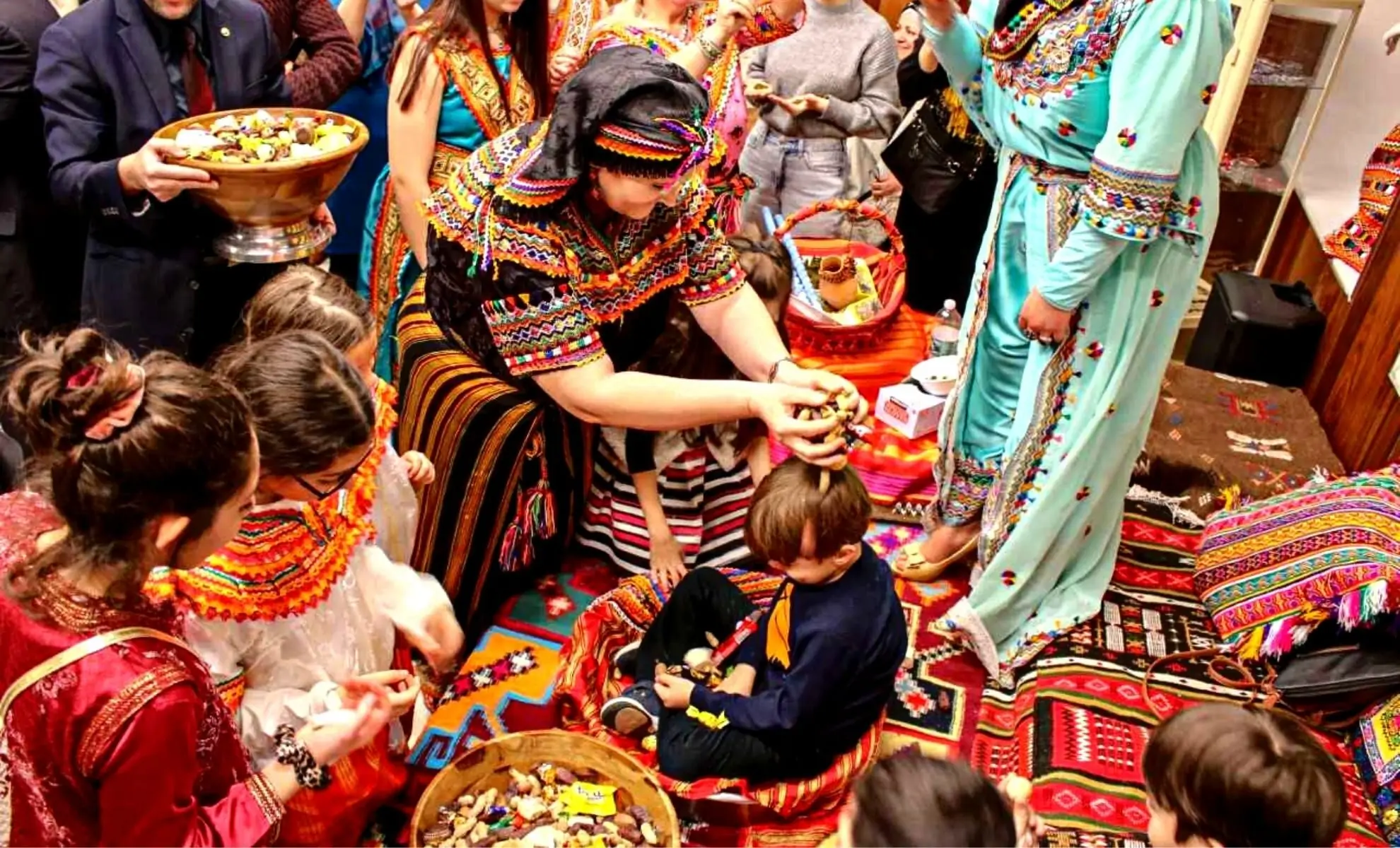Traditions and way of life of the Amazighs: Between past and present
The Amazigh, an indigenous people of North Africa, have a rich culture that is manifested through their traditions, way of life, and deep connection with nature. This article explores ancestral Amazigh practices and how they have evolved over time, highlighting their relevance in the modern world.
The central role of ceremonies and festivities
Ceremonies and festivities occupy a prominent place in Amazigh culture, notably weddings, rites of passage and seasonal celebrations.

- Traditional Weddings : An Amazigh wedding is a cultural spectacle. The bride wears intricately crafted silver jewelry, symbolic temporary tattoos, and ornate clothing. Every detail, from henna to polyphonic chants, reflects an aspect of the community.
- Yennayer, the Amazigh New Year : Celebrated every year on January 12, Yennayer marks the beginning of the agricultural calendar. This day symbolizes prosperity and harmony with nature, and is accompanied by festive meals, dances and songs.
Craftsmanship: Timeless know-how
Amazigh craftsmanship is much more than just a profession: it is a mode of cultural expression.

- Silver Jewelry : Amazigh jewelry, often adorned with symbols such as the chevron or the fibula, represents both beauty and spiritual protection.
- Rugs and textiles : Berber rugs, hand-woven, tell stories through their geometric patterns and vibrant colors. Each region has its own style, making them unique pieces.
- Pottery and ceramics : Everyday objects, such as jars and dishes, are decorated with symbolic designs that combine aesthetics and utility.
Agriculture in harmony with nature
Agriculture has always been at the heart of the Amazigh way of life. Based on sustainable techniques passed down from generation to generation, it reflects a deep respect for the environment. Cultivated terraces in the mountains, traditional irrigation, and olive and almond plantations demonstrate how the Amazigh live in harmony with their natural environment.
Evolution and persistence in the modern world
Despite the challenges of modernization, the Amazigh have managed to preserve the essence of their traditions while adapting. Today, their festivals attract visitors from all over the world, and their crafts are recognized as a precious heritage. The Tamazight language, once marginalized, is experiencing a revival thanks to its integration into education and media systems.

Conclusion
The traditions and way of life of the Amazigh, although rooted in the past, continue to be a source of inspiration. Whether through their festivals, their crafts or their relationship with nature, the Amazigh prove that cultural heritage can be a living and dynamic force. By understanding and celebrating this richness, we contribute to preserving one of the oldest cultures in the world.
